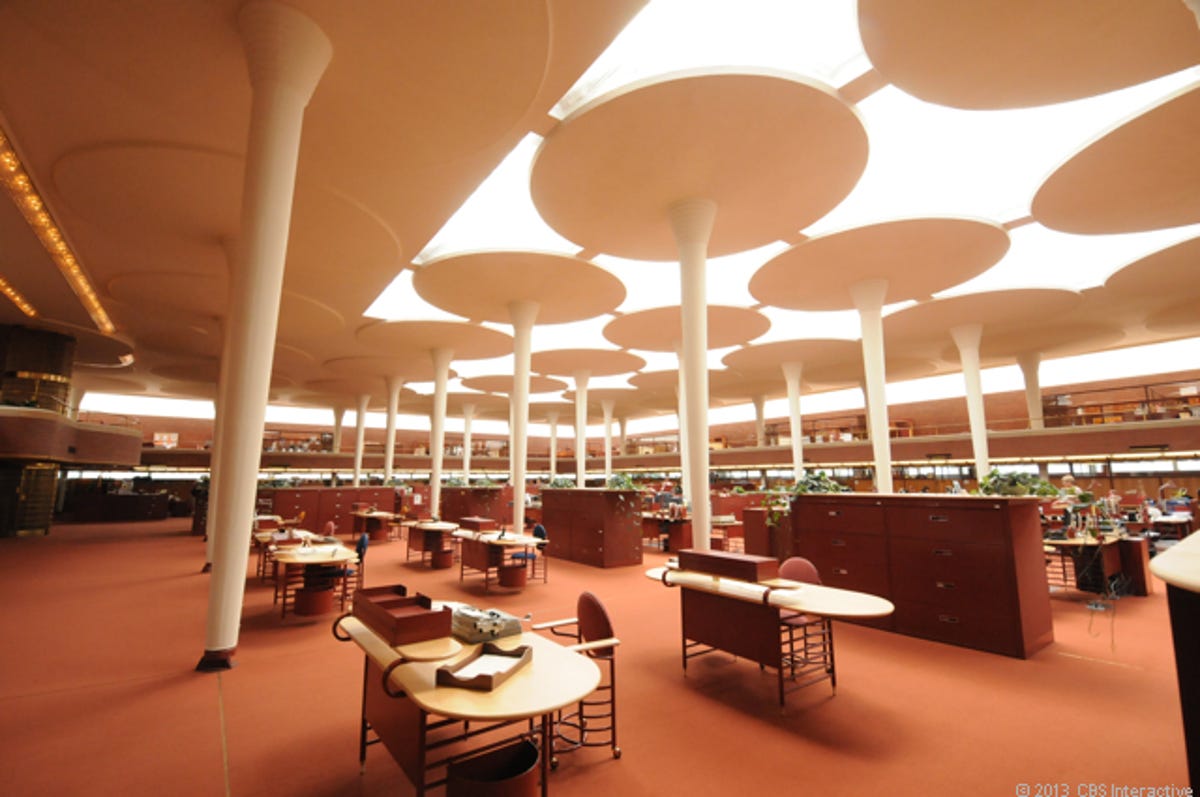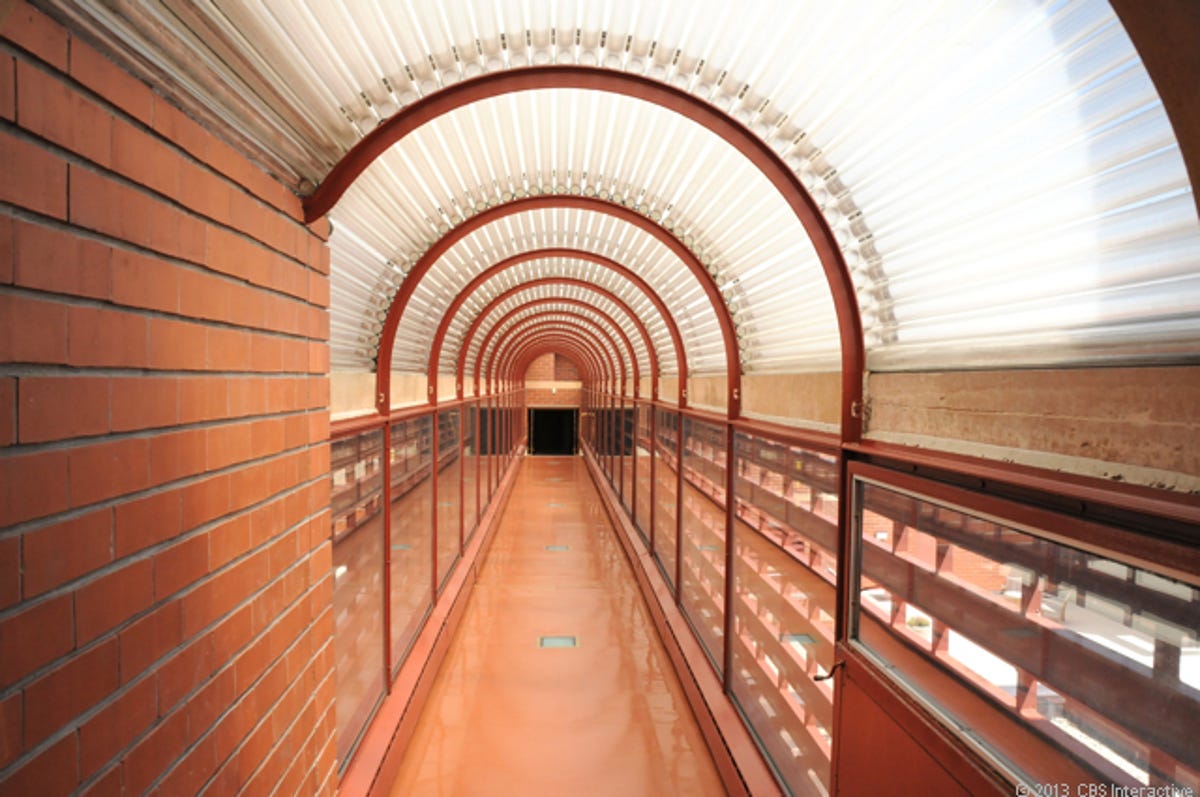Why Frank Lloyd Wright piled 60 tons on a lily pad (pictures)
Officials doubted that the famed architect's Johnson Wax headquarters in Racine, Wis., was structurally sound. But no one questions the master. CNET Road Trip 2013 checked out the stunning building.

The great workroom
The highlight of the building is its world-renowned Great Workroom of the headquarters' administration building, a half-acre open space filled by nearly 60 21-foot-tall dendriform (shaped liked a tree) columns that almost seem to float throughout the room.
The great triumph of the columns, which are also collectively known as a lily pad, is that they effortlessly hold up the roof, allowing for walls made partially of glass tubes -- a design that allows a great deal of natural light to flood the space during the day.
As part of Road Trip 2013, CNET's Daniel Terdiman jumped at the chance to see how the great architect could achieve what to others seemed certain to defy the laws of physics.
Seventy-four years after the building's opening, one might wonder how Wright convinced the commission to change its mind. The answer: He had workers pile as much as 60 tons of sandbags on top of one of the columns, which only needed to hold 12 tons under his design.
By the end of the demonstration, seen here in a photograph from 1937, the commission reversed its decision in less than 24 hours, and the building became part of American's great architectural heritage.
Great workroom natural light

Walkway to R&D building
Sitting area and lily pad
Great workroom from second level
Art patterns in the glass
At the SC Johnson headquarters in Racine, Wright used a similar concept -- artistic glass, made out of tubes, that let in natural light, but kept what went on inside the building private.
Lightwell
Spiral staircase to bathroom
Elevator cage
Elevator open
Tube pattern in the ceiling
Desk with mailslots
Swing drawer
Three-legged chair
Lighting
R&D tower
View and no view
Here, we see a section along one wall where some of the tubing has already been replaced with all-new glass, while some has yet to be fitted. That means that, for the moment, there is a view out of the building that will never again be possible once all the new tubing is installed.

